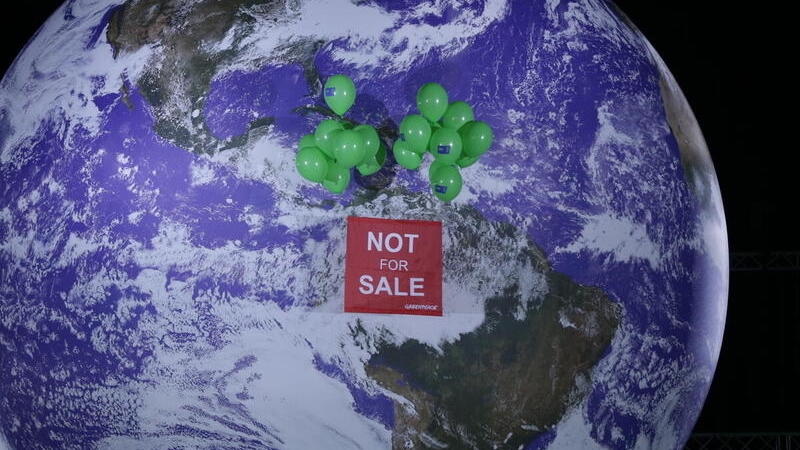Since their inception more than 30 years ago, carbon offsets have given false comfort to those seeking easy solutions to the climate crisis.
Encouraging one party to continue pumping greenhouse gases into the atmosphere, while paying another to do the opposite has been a giant diversion: side-tracking us from decarbonising our economies and lives.
One scandal after another has engulfed carbon offset schemes. Their credibility has eroded as evidence has mounted that offset projects fail to deliver the climate gains that they promise.
An investigation earlier this year found that 90% of the rainforest protection schemes approved by the world’s largest carbon offsets standards agency, Verra, were “worthless” from a climate perspective. This point was reinforced by a new study from UC Berkeley, which found that the companies had greatly overstated the emissions their projects saved.
Inherently flawed
Another study investigating the largest forest offsetting schemes by companies, governments and the World Bank reached the same conclusion: all had inflated their impact.
The real problem with carbon offsetting schemes, however, lies less with their execution than with their inherent flaws.
This is especially true of land-based offsetting – where polluters claim the effects of their fossil fuel emissions have been neutralised because they’ve paid for trees to be planted, improved farming methods, or temporarily locked carbon into the land by another means.
Exposed: carbon offsets linked to high forest loss still on sale
These schemes are predicated on the promise of sucking vast amounts of carbon out of the atmosphere in the future: a future laden with variables and uncertainties. By contrast, every ton of emissions released now will certainly contribute to the floods, heat waves, wildfires and other climate-fuelled chaos unfolding across the planet.
From global leader to global wrecking ball?
Yet just as the evidence is hardening around land-based offsets’ fundamental flaws, the European Union (EU) could be on the cusp of agreeing a law that would bolster the market. This would signal a serious reversal of the EU’s status as a global climate leader.
EU countries hammer out joint stance for Cop28 climate summit
The EU chose to exclude forest offsets from its Emissions Trading System (ETS), because of concerns about the problems plaguing the voluntary carbon offset market – that projects could be manipulated to overstate their climate impact.
Now, with potentially disastrous consequences, conservative EU lawmakers are paving the way to reverse this.
Their proposed EU Carbon Removal Certification Framework (CRCF), aimed at establishing new standards for calculating carbon dioxide removals from forests, farms, or yet-to-be developed projects for industrial carbon capture, will also include forest offsets.
Cooking the books: cookstove offsets produce millions of fake emission cuts
The CRCF would encourage private, self-regulating agencies like Verra to create tradable carbon credits based on agreed standards, allowing the use of carbon removals to offset ongoing emissions by the entities that buy the credits, rather than ensuring companies are obligated to both reduce their emissions and pay for activities that remove carbon.
This dangerous proposal, which is currently before the European Parliament, would reward offsetters with an EU stamp of approval. It would also create the false impression that the use of tradable carbon credits, developed under new EU rules and misleadingly described as “carbon removals”, will result in lower total emissions.
The opposite is more likely to occur.
A stark choice
Like other speculative markets, from crypto currencies to derivatives, the carbon offset market is plagued by cycles of boom and bust. It is currently in a swoon. As the risks of being held liable for false claims have risen, many companies have stopped buying. The price for land-based carbon credits has fallen tenfold since the start of 2022.
Those championing land-based carbon offsetting as a climate solution are trying to resuscitate the carbon offset market. A major reason, as a new report co-authored by Kathleen McAfee asserts, is that carbon trading has become a self-perpetuating industry rife with conflicts of interest and a bias for producing success stories.
In their quest to revive their industry, the carbon marketeers seem to have found powerful allies among a sizeable number of Members of the European Parliament (MEPs).
This week, the European Parliament’s Environment Committee will vote on the CRCF. If MEPs are serious about tackling the climate emergency, then they must call for the EU to ban the sale of carbon credits which would enable climate action to be delayed.
As the world has just endured the hottest July, August and September on record, it is clear that the EU faces a stark choice. It can either give a false climate solution a new lease of life – or face up to the reality that offsets simply don’t work.
Dr Kate Dooley is a Research Fellow in the School of Geography, Earth and Atmospheric Sciences at the University of Melbourne. Dr Kathleen McAfee is Professor Emerita in International Relations at San Francisco State University.
